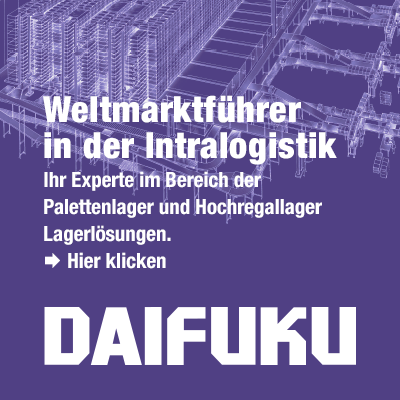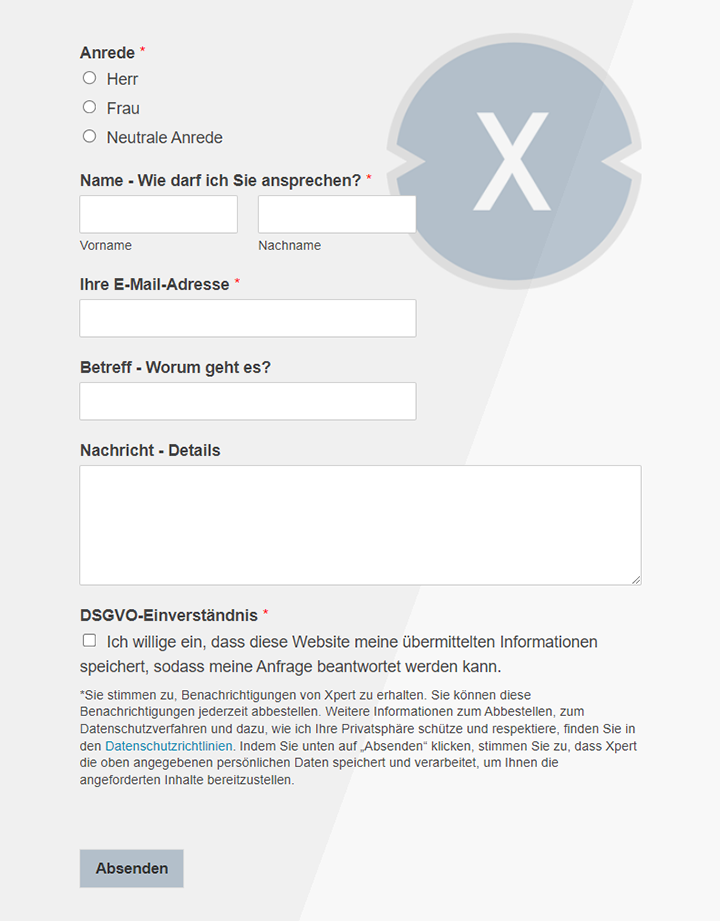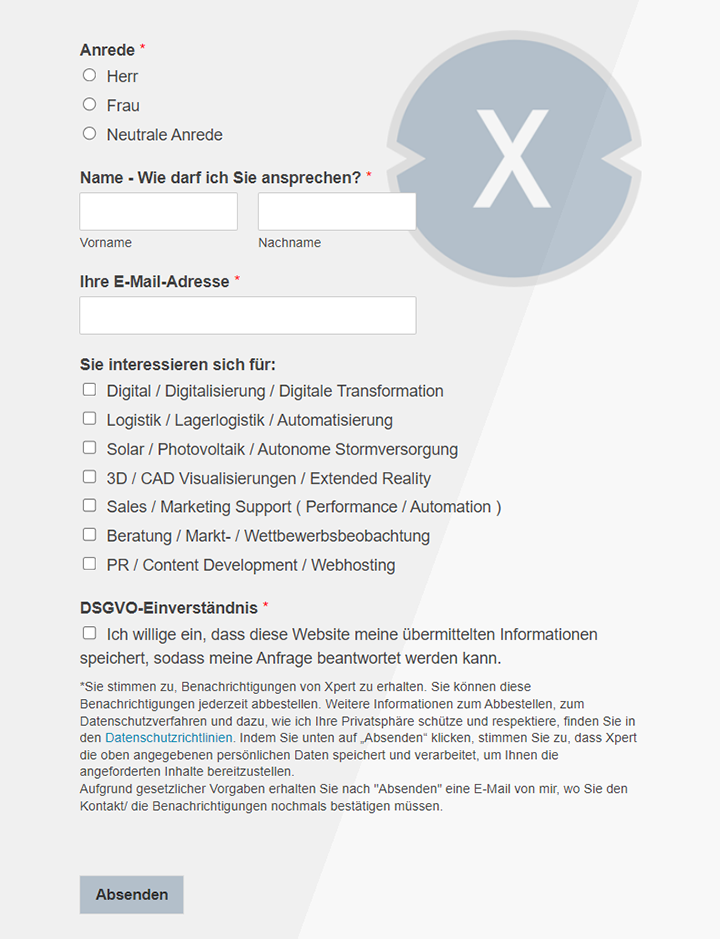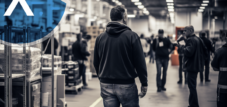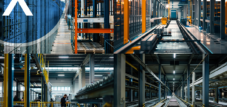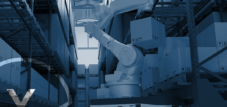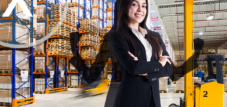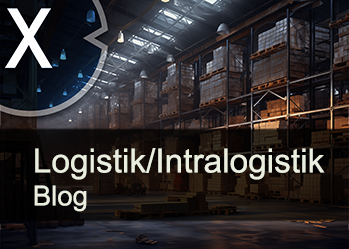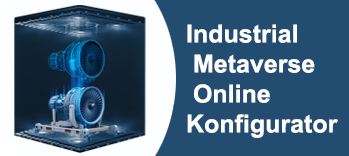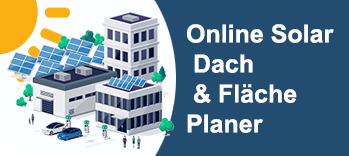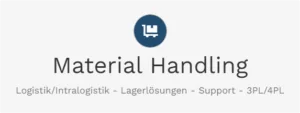Intralogistics tips – Logistics advice for returns: Separate the picking area from the product return area
Language selection 📢
Published on: April 23, 2024 / Update from: April 23, 2024 - Author: Konrad Wolfenstein

Room for optimization: How to effectively separate picking and return processes - Image: Xpert.Digital
🔑 In the world of intralogistics, efficiency is the key to success
👁️ In an increasingly competitive market environment, optimizing internal processes is essential to save time and resources and therefore increase the company's profitability. An important aspect that is often underestimated concerns the spatial division and organization of the warehouse - in particular the separation of the picking area from the product return area.
In many companies, the focus is on speeding up processes and minimizing throughput times. However, a poorly thought-out arrangement of work areas can lead to significant inefficiencies. A common mistake is placing product return areas too close to the picking areas. At first glance, this seems logical, as returned products should be quickly reintegrated into inventory and made available for new orders. But a closer look reveals significant disadvantages of this practice.
🚫 The problem of inadequate separation
The lack of separation between picking and returns can lead to various problems. One of the most serious is the increased risk of inventory losses. Products that have been returned and may be defective or damaged may inadvertently be restocked and reshipped, resulting in customer dissatisfaction and further returns. In addition, the proximity to picking poses the risk that employees will accidentally use returns when compiling new orders, leading to incorrect shipments and ultimately poor inventory control.
🛠 Solution: Efficient separation and organization
To avoid these problems, it is essential to create a clear separation between the picking area and the returns area. This starts with the physical design of the warehouse. An effective strategy is to create separate zones specifically dedicated to processing and controlling returns. These areas should be equipped with the appropriate technical means and qualified personnel to ensure rapid and efficient processing. This organizational separation can ensure that returned items are appropriately inspected, repaired, restocked or disposed of before being reintroduced into the sales cycle.
But separation alone is not enough. A key factor in the efficient handling of returns and the avoidance of stock shortages is a sophisticated information system. Digitalization plays a crucial role here. Modern warehouse management systems (LVS) offer the opportunity to precisely record and track returns so that there is clarity about the condition and location of a product at all times. With the help of barcodes, RFIDs or other identification technologies, the path of each item - from return to reintegration into inventory - can be traced seamlessly.
✅ Best practices for intralogistics
In order to fully exploit the potential of well-structured intralogistics, companies should think beyond the physical and organizational separation of picking and return areas. The following best practices offer further starting points for optimization:
Regular training of staff
Continuous training for employees in dealing with the processes and technologies of intralogistics is essential. This is the only way to ensure that returns are handled correctly and sources of error are minimized.
Flexibility in warehouse design
The layout of a warehouse should not be viewed as set in stone. Rather, it is advisable to regularly check the arrangement of the areas and adapt it if necessary to meet changing requirements.
Using technology to increase efficiency
In addition to warehouse management systems, automation solutions such as robots or automated guided vehicle systems (AGVs) can also increase efficiency and reduce errors.
Sustainable disposal of returns
Another aspect that should not be ignored is the sustainable handling of returns that can no longer be used. Recycling or cooperation with social institutions are ideal here.
🧩 Strategically thought-out separation
Intralogistics is a complex field in which many factors intertwine. A strategically thought-out separation of the picking area from the product return area is an important step in increasing efficiency, reducing errors and ultimately increasing customer satisfaction. With the right planning, modern technology and a committed team, the potential of intralogistics can be fully exploited to successfully meet the challenges of the market.
📣 Similar topics
- 📘 Increasing efficiency in intralogistics: The importance of spatial separation
- 🚚 Optimization of the warehouse: separation of picking and returns
- 🛠️ Avoiding inventory losses through strategic warehouse organization
- 📦 Best practices for handling product returns in intralogistics
- 🤖 Use of technology in the warehouse: automation and digitalization
- 💡 Flexibility and adaptability in warehouse design
- 🎓 The role of employee training for efficient intralogistics processes
- 🌿 Sustainable disposal and recycling of returns
- 🔄 From returns management to reintegration into the inventory
- 🎯 Increasing customer satisfaction through effective intralogistics
#️⃣ Hashtags: #Intralogistics #Increasing Efficiency #Warehouse Optimization #Use of Technology #Customer Satisfaction
Xpert partner in warehouse planning and construction
🔧 The role of technology in intralogistics
🛠️ Technological developments play a central role in optimizing intralogistics processes. The introduction of advanced technologies enables more precise and efficient handling of products in the warehouse, providing solutions to challenges that traditional methods cannot address. A prime example of this is the introduction of warehouse management systems (WMS), which enable seamless integration of inventory management, picking and processing returns. These systems provide comprehensive insights into real-time inventory data, improving transparency and enabling data-driven decision making.
In addition, the use of automation is becoming increasingly essential. Robots and automated conveyor systems can move heavy loads and help eliminate human error, increase efficiency and improve worker safety. Implementing sortation systems that automatically recognize and categorize products according to their destinations can also help increase efficiency in processing returns.
Another technological advancement that is revolutionizing intralogistics is the use of drones and autonomous vehicles within the warehouse. These innovative solutions offer a fast and flexible alternative to traditional goods handling and make it possible to efficiently serve even difficult-to-reach storage areas.
🌱 Sustainability as an integral part of intralogistics
🍃 Sustainability in intralogistics goes beyond the efficient use of resources and also includes the environmentally friendly disposal of returns. Awareness of the environmental impact of production and warehousing processes has increased, increasing the demand for sustainable solutions. Ideally, companies should implement a strategy to reduce waste by reusing, repairing or recycling returned products. Working with local recycling centers or charities that can use damaged goods represents a positive contribution to environmental protection while strengthening the company's public image.
🔮 The future of intralogistics
💡 Looking into the future, it is expected that intralogistics will continue to be characterized by innovations and technological developments. The concept of “smart warehouses”, i.e. intelligent warehouses that are fully controlled by automated systems and artificial intelligence, is moving ever closer to reality. These developments promise unprecedented optimization of logistics processes, from storage and picking to shipping and return of products.
The successful implementation of intralogistics strategies requires a combination of strategic planning, the use of modern technologies and a sustainable approach. Companies that are able to adapt to the rapidly changing demands of the industry while implementing efficient, sustainable solutions will be able to maintain their competitive advantage and achieve long-term success. Finally, it is important to recognize that intralogistics is not only an internal necessity, but also offers an opportunity to respond dynamically and responsibly to the challenges of global markets.
📣 Similar topics
- 🤖 The evolution of automation in intralogistics
- 🚀 Use of innovative technologies for efficient warehouse processes
- 🌱 Sustainability as a goal in modern intralogistics
- 🌍 Environmentally friendly returns processing in the warehouse
- 🤝 The contribution of intralogistics to ecological sustainability
- 🧠 The role of AI in the development of intelligent warehouses
- ✨ From smart warehouses to the future of intralogistics
- 🔄 Recycling and reuse as part of the logistics strategy
- 🛠 Technical innovations to optimize picking
- 📊 Data-driven decision making in intralogistics
#️⃣ Hashtags: #TechnologyInTheLogistics #SustainableIntralogistics #AutomatizationInTheLogistics #IntelligentWarehouses #FutureOfIntralogistics
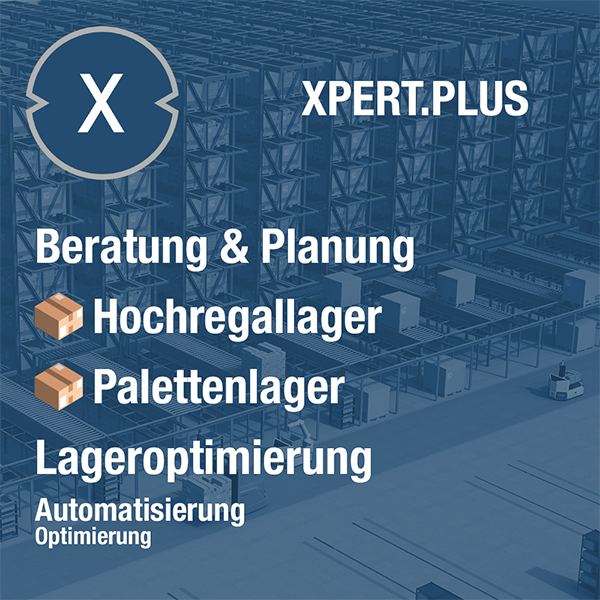
Xpert.Plus warehouse optimization - high-bay warehouses such as pallet warehouses consulting and planning
📦💰 Efficient logistics: How separating picking and return zones saves costs
💼 Cost reduction in logistics: Strategies to minimize expenses through efficient separation of picking and return zones
The success of a company depends largely on the efficiency and effectiveness of its logistics processes. This particularly concerns the areas of picking and returns, which if not handled properly can result in unnecessary costs. One strategy for reducing costs in the logistics industry is therefore to optimize and efficiently separate the areas for picking and returns. This approach can result in minimizing expenses without compromising service quality or customer satisfaction.
🧐 1. Understanding the challenges
The first challenge businesses face is the volume of returns. In e-commerce, for example, it is expected that a significant proportion of the goods sold will be returned. These returns must be processed efficiently to save on storage costs, quickly replenish inventory, and maintain customer satisfaction.
Another challenge is the complexity of picking, which is related to the variety of products, the size of the warehouse and the different customer requirements. Errors in the picking process can lead to incorrect deliveries, which in turn increases the costs of returns and exchanges.
🛠️ 2. Cost reduction strategies
To address these challenges and increase operational efficiency, the following strategies can be implemented:
A. Optimization of warehouse layout design
Physically separating the picking and returns areas is an effective way to minimize interference between these tasks and increase the efficiency of both processes. An optimized warehouse layout enables work processes to be structured more clearly and reduces employee travel times, which is directly reflected in time and cost savings.
B. Use of modern technologies
State-of-the-art technologies such as automation systems, robots, artificial intelligence (AI) and machine learning can offer enormous advantages in both picking and processing returns. These technologies can help reduce human error, shorten processing time and ultimately reduce costs.
C. Improve precision and prediction accuracy
Through improved data collection and analysis, companies can make more accurate predictions about which products will be returned most often. This information can be used to adjust the picking process, improve quality assurance and take targeted measures to reduce the return rate.
D. Sustainability and reuse
Efficient handling of returns also includes the ability to inspect, process and put returned goods back on sale. This not only helps reduce costs but also promotes sustainable business practices.
🌟 3. Case study
The company Zalando provides a clear example of the successful application of these strategies. By introducing an automated warehouse management system and optimizing the warehouse layout, Zalando was able to significantly increase the efficiency of its logistics processes. The use of data analysis and AI also helps the company predict return rates and take targeted measures to reduce them.
🔮 4. Future perspectives
The future of logistics lies in the further integration of technologies and the application of data-driven strategies. Companies that are able to adapt and implement innovations will achieve competitive advantages and sustainably reduce their costs. In addition, the focus on sustainability and reducing the ecological footprint is becoming increasingly important. By implementing efficient returns processes and promoting circular economy, companies can not only save costs, but also make a positive contribution to environmental protection.
📚 Efficient separation and optimization
The efficient separation and optimization of the areas for picking and returns is a crucial factor in reducing logistics costs. By applying the mentioned strategies, companies can not only minimize their financial burden but also improve their operational efficiency and customer satisfaction. The role of technology and data analytics will continue to grow, and companies willing to invest in this future will reap significant benefits.
📣 Similar topics
- 🤖 The future of spare parts logistics through AI and IoT
- 🌐 The digital transformation of spare parts supply
- ⏱️ Acceleration of spare parts logistics in modern industry
- 🔍 Predictive Maintenance: Revolution through Artificial Intelligence
- 💡 From traditional to innovative: The change in spare parts procurement
- 🔄 Spare parts supply 2.0: Strategies for the digital era
- 🔌 IoT: The backbone of modern spare parts logistics
- 💼 New business models in spare parts logistics through AI and IoT
- 🛠️ Personalized service offerings through real-time data analysis
- 🛡️ Cybersecurity in networked spare parts logistics
#️⃣ Hashtags: #Sparepartslogistics #AIandIoT #DigitalTransformation #PredictiveMaintenance #Cybersecurity
We are there for you - advice - planning - implementation - project management
☑️ Smart City & Factory: Industry expert for energetic 5G buildings and halls as well as advice and installation of solar systems
☑️ Xpert.Plus - logistics consulting and logistics optimization
☑️ Industry expert, here with his own Xpert.Digital Industry Hub with over 2,500 specialist articles
I would be happy to serve as your personal advisor.
You can contact me by filling out the contact form below or simply call me on +49 89 89 674 804 (Munich) .
I'm looking forward to our joint project.
Xpert.Digital - Konrad Wolfenstein
Xpert.Digital is a hub for industry with a focus on digitalization, mechanical engineering, logistics/intralogistics and photovoltaics.
With our 360° business development solution, we support well-known companies from new business to after sales.
Market intelligence, smarketing, marketing automation, content development, PR, mail campaigns, personalized social media and lead nurturing are part of our digital tools.
You can find out more at: www.xpert.digital - www.xpert.solar - www.xpert.plus



